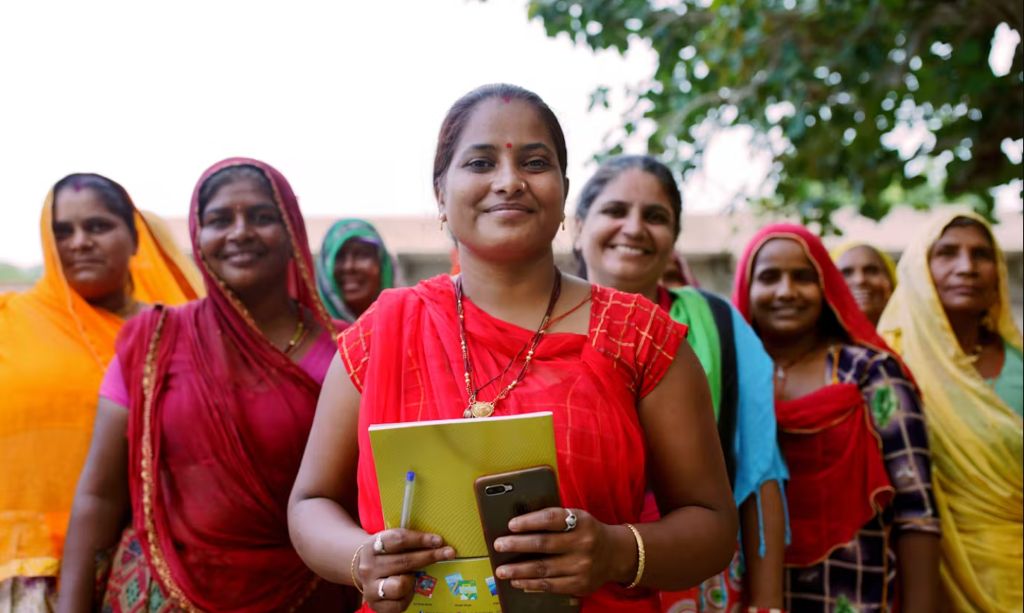Ten years since its launch, Pradhan Mantri Mudra Yojana (MMPY)- the Indian government’s flagship scheme to promote financial inclusion, has achieved great success as 52 crore loans worth Rs 32.61 lakh crore have been disbursed to the micro enterprises and small businesses at the grassroots level under this scheme. And keeping up with its promise of ‘funding the unfunded’, Pradhan Mantri Mudra Yojana has 50% of the loan accounts belonging to marginalised socio-economic groups of SC/ST/OBC and 68% of the loan accounts belonging to women beneficiaries.
The Pradhan Mantri Mudra Yojana, better called as Mudra Yojana or PMMY, is a central government’s initiative to provide micro credit and loans up to Rs 20 lakh to self-entrepreneurs, micro and small businesses in India.
The loans are disbursed through banks, regional rural banks, microfinance institutions and NBFCs. These collateral-free are designed to encourage the financial inclusion and lending accessible to the first time borrowers especially from informal and unorganised sectors. The loans are categorised in to Shishu, Kishore, Tarun and Tarun Plus, the scheme issues credit amount depending on the need of the business.
Fuelling MSMEs’ growth with credit expansion
According to a PIB report, Mudra Yojana has been a leading factor contributing to the rise in credit flow to the Micro, Small & Macro Enterprises (MSMEs). The MSME lending has increased from Rs 8.51 lakh crore in FY14 to Rs 27.25 lakh crore in FY24, enabling non-corporate, non-farm micro and small businesses to access financial support that was previously unavailable.
The MSME lending is projected to surpass Rs 30 lakh crore in FY25.
Empowering women entrepreneurs
68% of the Mudra scheme beneficiaries are women, leading to increased employment generation through women-led MSMEs.
The per woman Mudra scheme disbursement amount have risen to Rs 62,679 at a CAGR of 13% between FY16 and FY25, and per woman incremental deposits also increased to Rs 95,269 growing at a CAGR of 14% during the same period.
Financial inclusion of socially marginalised groups
50% of the loan accounts under Mudra scheme belong to the beneficiaries from Scheduled Caste, Scheduled Tribes, and Other Backward Classes, and further 11% are held by beneficiaries from the minority communities.
Of the total accounts under PMMY, 50% are belong to General category, 28% to OBC, 6% to ST and 16% to SC beneficiaries. While a big chunk of accounts are still held by the beneficiaries from General category, inclusion of marginalised groups indicates Mudra scheme’s contribution in providing formal credit access to the economically weaker groups.
Rise in average loan size
The Pradhan Mantri Mudra Yojana provides loans under three categories- Shishu, Kishore and Tarun.
- Shishu: For loans up to Rs 50,000
- Kishore: For loans between Rs 50,000 to Rs 5 lakh
- Tarun: For loans between Rs 5 lakh to Rs 10 lakh.
- Tarun Plus: For loans between Rs 10 lakh to Rs 20 lakh
In 2016, the smaller loans under Shishu category accounted for majority of the loans i.e., 92.9% and Kishore category accounted for 5.9% and Tarun category only 1.2%. Fast forward to 2025, the share of medium-sized loans under PMMY – between Rs 50,000 and Rs 5 lakh (Kishore loans) has grown from 5.9% in FY16 to 44.7% in FY25 while Shishu category loans’ share decreased to 51.7%. Tarun and Tarun also recorded an increase in 2025, rising to 3.6% and 0.05% respectively.
This data shows that the average ticket size of the loans has nearly tripled in ten years, growing to Rs 1.02 lakh in FY25 from mere Rs 38,000 in FY16.
And not only the ticket size, the loan disbursal also increased by 36% in FY23.
State-wise impact
Tamil Nadu, Uttar Pradesh and Karnataka are the top three states that have recorded the highest loan disbursal under Pradhan Mantri Mudra Yojana at Rs 3.23 lakh crore, followed by Uttar Pradesh at Rs 3.14 lakh crore and Karnataka at Rs 3.02 lakh crore. West Bengal, Bihar and Maharashtra followed closely by disbursing loans worth Rs 2.82 lakh crore, Rs 2.81 lakh crore and Rs 2.74 lakh crore respectively.
Jammu & Kashmir led the way among Union Territories by disbursing Mudra loans worth Rs 45,815 crore to 21.33 lakh accounts.
Who can avail a Mudra loan and how?
Individuals, proprietorship, partnership firms, private Limited Companies, Public Companies or other legal firms- all are eligible but the application and loan approval process depends on various factors such as proposed business activity, educational qualification or possession of skills/ experience/ knowledge to undertake the business activity.
The eligible and interest applicants can register and complete the application process online through the official website. Documents such as ID proof, address proof, passport size photograph, signature and proof/identity of business are required while application process.
Positive Impact
From empowering women entrepreneurs to expanding formal credit access to the rural entrepreneurs and socially marginalised groups, Mudra Yojana is proving true to its purpose of creating an ecosystem of growth for micro enterprises at the grassroots level.
There is no shortage of schemes launched by Central government and States for financial welfare and financial inclusion of the economically weaker sections. The informal unorganised sector makes up for more than 45% of the India’s economy, as per Ministry of Statistics & Programme Implementation. So, the Mudra yojana’s role is crucial to strengthen the economy by addressing the need to provide credit to the micro and small business across the country.
